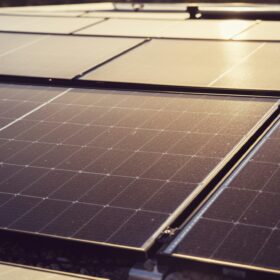From outside the Midwest, one might not think of Indiana as much of a solar market. Yet the Hoosier State has over 254 MW installed, according to the Solar Energy Industries Association, almost as much as the combined capacity of the surrounding states of Illinois, Kentucky, Ohio and Michigan. And if one cursorily followed the state’s solar policy, one may have thought that enactment of Senate Bill (SB) 309 would have squelched that market. Again, not quite.
In net metering, SB309 is actually a three part, or tier, bill. Tier 1 keeps the status quo of net metering alive at the retail rate, an average of $0.0153/kWh, until December 31, 2017, and is in effect until 2047, where it reverts to a wholesale rate. Tier 2 has a ten year retail net metering agreement in effect from January 1, 2018 until December 31, 2021, where wholesale rates take effect. Tier 3 takes effect after January 1, 2022, and pays wholesale rates only. Wholesale rates are to be calculated on an annual basis, with the latest EIA range that impacts Indiana running from over $20 to around $55/MWh.
A flurry of market activity has resulted from SB309 in the net metering market for 2017. Residential and other small users have started “Solarize Indiana” campaigns in cities like Bloomington, Columbus, Carmel and Evansville and elsewhere. These campaigns are primarily awareness and marketing efforts that result in potential customers buying from a preferred vendor at reduced prices under volunteer guidance. Larger electricity users like schools are going ahead developing contracts before the year is out under the one MW net metering limit.
But the net metering market is only the tip of the solar iceberg in Indiana. According to the Indiana Utility Regulatory Commission (IURC), retail net metering accounts for less than 20 MW of solar. The bulk of installations and generation are at the utility level. Utilities like North Indiana Public Service Company and Indianapolis Power and Light have voluntary feed in tariffs, the latter company having almost 100 MW in capacity. Indiana utilities are allowed to own generating assets, so utilities like Duke Energy have entered into power purchase agreements or outright ownership of larger scale solar. Developers of these projects include in-state companies like Inovateus Solar, as well as outside of state entities like Juwi or Cypress Creek.
Meanwhile, work continues to clarify SB309. The IURC held a technical sessions in July to address issues such as tracking net metering agreements through home sales and utility account transfers. There is differing interpretation by the various utilities on matters such as whether a 1 MW net metering limit covers a single account or a customer entity such as a school district. There may be attempts to enact “clean up” legislation on SB309 in 2018. Whether that would cover more extensive subjects like introducing a value of solar metric like what was proposed by the Hoosier Environmental Council remains to be seen.
This content is protected by copyright and may not be reused. If you want to cooperate with us and would like to reuse some of our content, please contact: editors@pv-magazine.com.








By submitting this form you agree to pv magazine using your data for the purposes of publishing your comment.
Your personal data will only be disclosed or otherwise transmitted to third parties for the purposes of spam filtering or if this is necessary for technical maintenance of the website. Any other transfer to third parties will not take place unless this is justified on the basis of applicable data protection regulations or if pv magazine is legally obliged to do so.
You may revoke this consent at any time with effect for the future, in which case your personal data will be deleted immediately. Otherwise, your data will be deleted if pv magazine has processed your request or the purpose of data storage is fulfilled.
Further information on data privacy can be found in our Data Protection Policy.